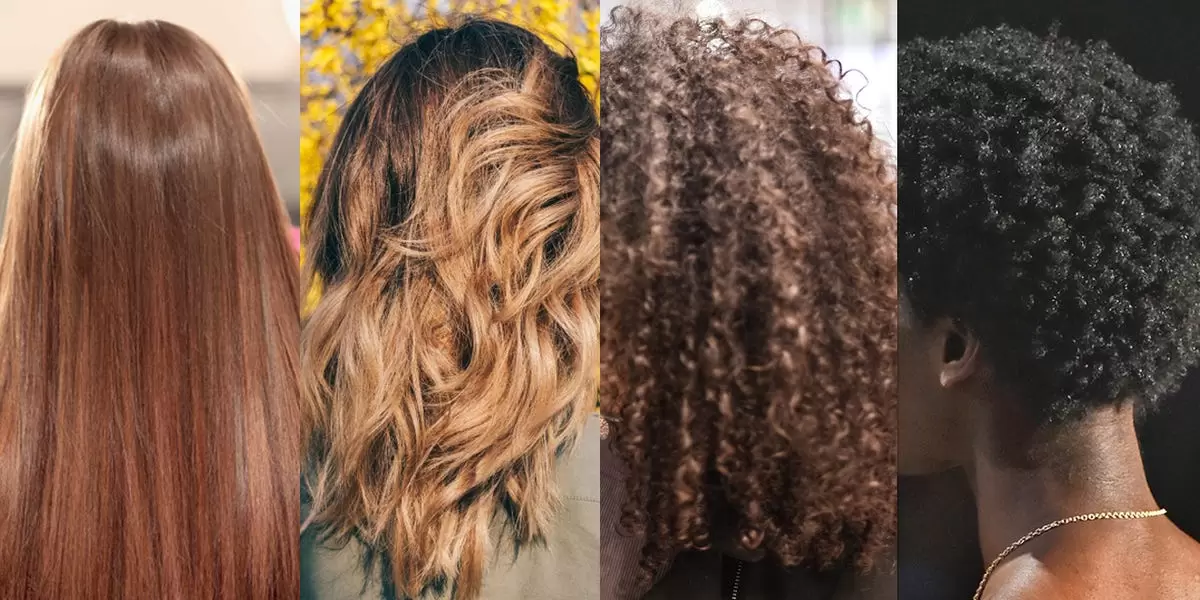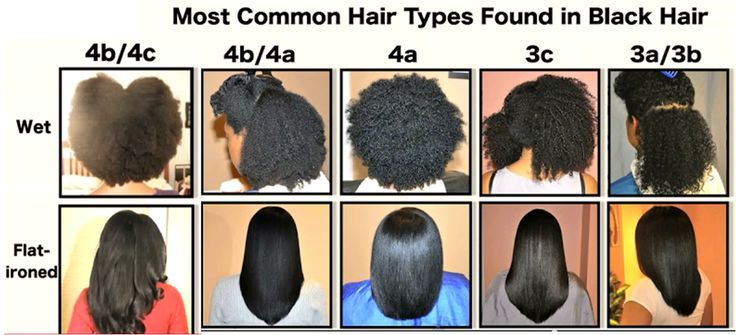Have you ever stood in front of the glass looking at yourself and wondered what your hair Types? Others think about this too. It has always been a mystery to understand why our own hairs do what they do.
This is the secret for achieving every day with perfect hair, customized treatments and love for that which covers your head. Hold tight because we are going to take you on a thrilling journey into what really makes your locks work!
Why Your Hair Types Matters More Than You Think
In reality, the hair you wear is not only unique to you but also it has a resemblance with your thumbprint. It is not just about whether it’s straight, wavy, curly or coily.
The type of your hair dictates everything from washing techniques to the right products that will make it look fantastic. Your haircare routine can change drastically once you know your type this is not just an interesting detail.
Surprisingly enough, wrong products chosen for one’s hair type can bring serious problems such like dry strands and breaking off; no volume at all or lack luster regardless of being washed daily.
The Science Behind Your Strands
Before we proclaim on the categories, allow us engage in some details about what hair really is. In reality, hair is not just a mere thread; rather it comprises three main parts:
- Cuticle: The outer layer that protects your hair
- Cortex: The middle layer that determines strength and color
- Medulla: The innermost layer (though not all hair types have this)
These parts work together to determine how your hair behaves. The cuticle, for instance, is like a suit of armor for your hair. When it’s smooth and flat, your hair looks shiny and feels soft. But when it’s raised or damaged, that’s when you start seeing frizz and dullness.
The Holy Grail: Andre Walker’s Hair Typing System
Enter Andre Walker, Oprah’s former hairstylist and the mastermind behind the most widely recognized hair typing system. He broke it down into four main categories:
Type 1: Straight as an Arrow
- 1A: Fine and thin
- 1B: Medium texture
- 1C: Coarse and thick
Straight locks are more susceptible to greasiness because natural oils from your head can effortlessly glide along it. It is indeed the strongest kind of hair, though at times it appears rather flat.
Type 2: Wavy Wonders
- 2A: Fine, tousled texture
- 2B: More defined S shaped waves
- 2C: Thick, coarse waves
Wavy hairs are like chameleons. They can easily be made straight or curly, thus offering the advantages of both styles.
Type 3: Curly Qs
- 3A: Loose curls
- 3B: Tighter, springy curls
- 3C: Corkscrew curls
The curly locks are usually rough for it gets frizzy oftenly. To achieve the best appearance, a lot of it must be hydrated and handled gently.
Type 4: Coily Creativity
- 4A: Tightly coiled S patterns
- 4B: Z patterned coils
- 4C: Tight, dense coils
Coily hair is the most fragile of all hair types. To be happy, it needs lots of love, moisture, and protection in terms of style.
More Than Just the Basics: Getting In-Depth
Walker’s system is an excellent foundation; nonetheless, when looking at your hair, curl pattern is just a portion of the equation. Let us discuss more important elements:
Texture Talk: Fine, Medium or Coarse?
In layman’s terms, hair texture is about the thickness of single strands. So how about this:
Take one strand of hair with two fingers.
If it is hard to feel then it’s fine.
If you can feel it but doesn’t have a rough touch then it’s medium.
if it is dizziness or bumps at touch level then it’s coarse.
Density Demystified: Thin, Medium or Thick?
Density refers to the number of hairs on a person’s head per square inch. Here’s how you do it::
- Part your hair down the middle.
- Look at your scalp in the mirror.
- If you can easily see your scalp, you have thin density.
- If you can see some scalp, but not much, you have medium density.
- If it’s hard to see your scalp at all, you have thick density.
Porosity Puzzles: Low, Normal, or High?
Porosity is your hair’s ability to absorb and retain moisture. It’s crucial for determining which products will work best for you.
| Porosity Level | Characteristics | Best Care Practices |
| Low | Takes a long time to get wet and dry | Use lightweight products, apply heat when deep conditioning |
| Normal | Absorbs moisture easily, dries in a reasonable time | Most products work well, regular maintenance is key |
| High | Absorbs moisture quickly, dries fast, prone to frizz | Use heavier products, focus on moisture retention and protein balance |
DIY Hair Typing: Home Tests That Actually Work
Ready to play scientist with your strands? Try these simple tests:
- The Wet Strand Test
- Wash your hair and let it air dry without product.
- Observe how it dries to determine your curl pattern.
- The Stretch Test
- Take a wet strand of hair and gently stretch it.
- If it barely stretches and breaks, you have low elasticity.
- If it stretches and returns to its original length, you have high elasticity.
- The Float Test for Porosity
- Drop a clean strand of hair into a glass of water.
- If it floats, you have low porosity.
- If it sinks slowly, you have normal porosity.
- If it sinks immediately, you have high porosity.
Common Hair Type Misconceptions: Debunking the Myths
Let’s clear the air on some hair type falsehoods:
- Myth: Curly hair is always dry and frizzy. Truth: With proper care, curly hair can be just as moisturized and defined as any other type.
- Myth: Straight hair doesn’t need conditioning. Truth: All hair types need moisture; straight hair just needs lighter products.
- Myth: You can change your hair type permanently. Truth: While you can alter your hair’s appearance, your natural type is determined by genetics.
Embracing Your Hair Type: Products and Techniques That’ll Make Your Hair Sing
Now that you’ve cracked the code, it’s time to give your hair what it craves. Here are some tailored tips:
For Straight Hair:
- Use volumizing products at the roots
- Try dry shampoo to combat oiliness
- Experiment with texturizing sprays for added body
For Wavy Hair:
- Scrunch in leave in conditioner while hair is damp
- Use a diffuser attachment when blow drying
- Try the “plopping” technique for enhanced waves
For Curly Hair:
- Apply products to soaking wet hair
- Use the “squish to condish” method
- Avoid brushing when dry; use fingers or a wide tooth comb
For Coily Hair:
- Deep condition regularly
- Use the LOC (Liquid, Oil, Cream) or LCO method
- Protect your hair at night with a silk or satin bonnet
When Hair Types Collide: Dealing with Multiple Textures
If you’ve got more than one hair type on your head, don’t fret! Here are some strategies:
- Section your hair when styling to give each type what it needs
- Use different products on different areas
- Consider a layered haircut to blend textures seamlessly
Hair Health Trumps Type: Universal Care Tips
Regardless of your hair type, these practices will keep your locks looking luscious:
- Stay hydrated: Your hair’s health starts from within
- Eat a balanced diet: Include foods rich in biotin, protein, and omega 3 fatty acids
- Limit heat styling: Always use a heat protectant when you do
- Get regular trims: Every 6-8 weeks keeps split ends at bay
- Be gentle: Treat wet hair like fine silk to prevent breakage
“Healthy hair is beautiful hair, no matter the type.”
Case Study: Sarah’s Hair Transformation
Sarah, a 28 year old marketing executive, always struggled with her hair. She thought she had straight, frizzy hair and was constantly fighting to keep it smooth.
After learning about hair types, she discovered she actually had 2B wavy hair. By embracing her waves and using appropriate products, her hair went from frustrating to fabulous in just a few weeks.
Before:
- Used straightening products and heat daily
- Hair was dry, frizzy, and lackluster
After:
- Embraced her natural waves
- Used moisturizing, wave enhancing products
- Limited heat styling to once a week
The result? Healthier, more defined waves and a simplified routine that cut her styling time in half!
Conclusion: Your Hair, Your Crown
Grasping your own hair type is akin to uncovering the key for a respective lock. It reveals an array of alternatives thus permitting you to engage with your hair as opposed to opposing it.
Keep in mind that your hair is exclusively yours; that very crown which one is not able to take off. And by taking advantage of its natural inclinations and maintaining it in line with such tendencies, you do not only enhance its health and beauty but also revel in your identity!
So do it; take this chance to stroke those strands like never before. You’ve cracked the code, and your best hair days are just beginning.

